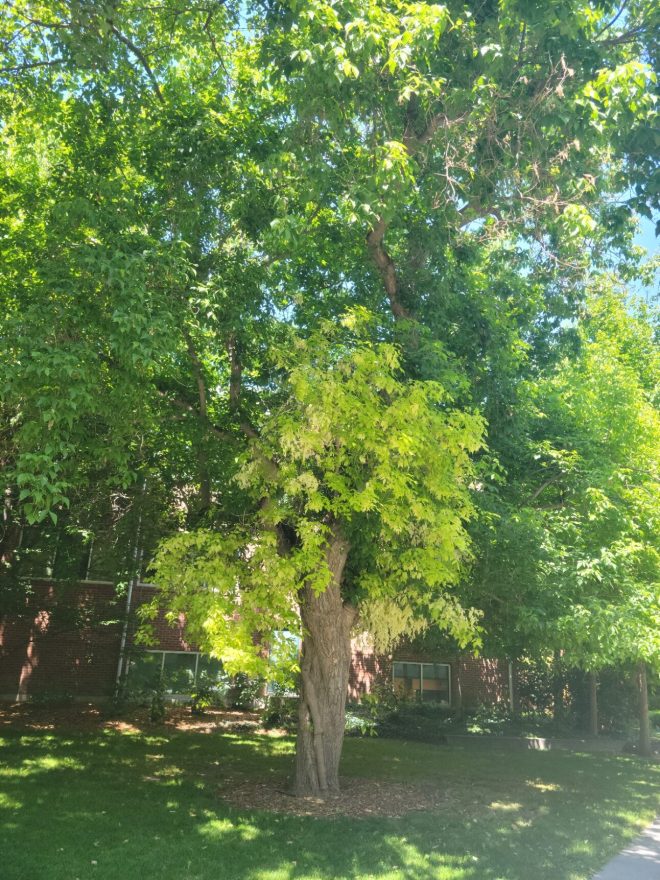We at the Garden Professors stress the importance of accurate
diagnoses of plant “problems.” Often, problems aren’t due to pests or disease,
and sometimes they aren’t problems at all. That got me thinking about a tree
oddity I saw earlier this year when I was visiting my daughter in Walla Walla.
Near her office at Whitman College stands a mature box elder (Acer negundo),
whose lower crown has large swaths of pale yellow leaves (Figure 1). From a
distance, one might think of several reasons these chlorotic leaves have
developed: lower crown leaves and branches are routinely less productive than upper
canopy leaves and as a result receive fewer resources from the tree. Lack of
water in particular can cause early fall color change.

But that’s not what’s going on here. A closer examination of the
leaves (Figure 2) also reveals a lumpy trunk (Figure 3) – and venturing around
the trunk we find multiple trunks that have fused together (Figure 4). What
become obvious through careful observation is that those pale yellow leaves are
associated with the smaller diameter stems wrapped around the main trunk.
-

Figure 2 -

Figure 3 -

Figure 4
Unfortunately, Whitman College does not have an online tree database for me to access, so I don’t know when this tree was planted or what variety it is. But I am fairly confident that it is Acer negundo f. auratum Schwer. (That “f.” stands for forma, which is synonymous with subspecies.) Anyway, this natural variation was recorded in 1893 in Gartenflora 42:202. More current references to this variant erroneously call it a cultivar (‘Auratum’). It’s identified as having golden-yellow leaves with smooth undersides.
Box elder is widely regarded as a fast-growing, weedy tree with
challenged aesthetics. The auratum form, with its chlorotic leaves, is
less vigorous and would be better suited for a college campus landscape. It’s
reported to only reach 25’ at maturity, with its yellow leaves becoming nearly
white in the summer.

And that life history characteristic is what spelled the near-demise of
the originally planted tree. Varieties, subspecies, and cultivars are often
grafted to species rootstock, which is a faster method of propagation than by
seed. Careful management of this young tree would have included removal of
suckers as they appeared at the base. Left unchecked, a vigorous sucker rapidly
outgrew the scion, which then became embedded in the new, dominant trunk.
The take-home message here reflects the importance of onsite field diagnostics. In this case, a photo of a chlorotic leaf does not tell the whole story and would likely result in a misdiagnosis.
Happy holidays to you and your trees!

